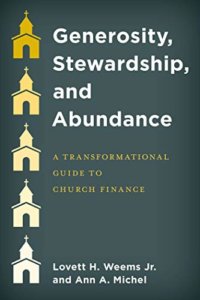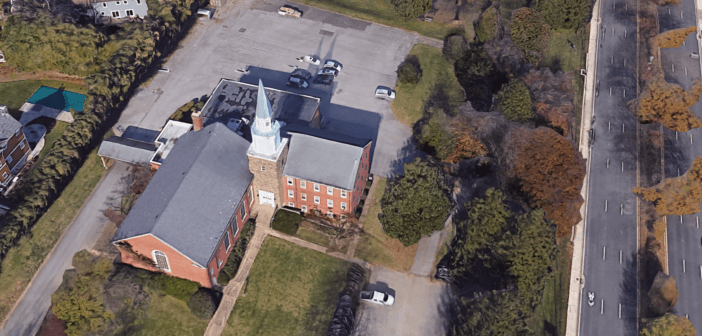Lovett H. Weems Jr. and Ann A. Michel say exploring additional uses of church buildings and property is an exercise in prudent stewardship. Many churches can find new resources to support their mission by taking stock of physical assets and thinking creatively about their use.
Churches give great attention to how they spend their money to support their mission. Likewise, churches should consider their land and buildings as shared assets of the community of faith to be used to the maximum for the mission. The most obvious use of a church’s property is for worship, education, fellowship, and community service. However, even active congregations have relatively low space usage compared to how other organizations use their space. So, exploring additional uses — whether to expand the church’s ministry, support other groups, or generate revenue — is an exercise in prudent stewardship.
Many churches are asset rich
Many churches are cash poor but property rich. They may have land, buildings, and no debt. These assets bring with them expenses of upkeep but little in the way of income. They are critical to the activities that express the church’s mission. But it is important to ask how fruitfully the assets are serving that mission, just as one would ask with any other investment.
David McAllister-Wilson, president of Wesley Theological Seminary, has observed that if the American church were a company its assets-to-income ratio would make it a prime takeover target. “We’ve got a lot of capital assets in the form of land that could produce a lot more revenue than it is now. We are overcapitalized. If we take our mission as seriously as 7-Eleven takes its bottom line, we need to see our property as a means to a greater end.” For example, the net value of the assets of United Methodist churches is almost $63 billion. That comes to an average of over $2 million per congregation and over $25,000 per worshiper.
Leveraging the value of physical assets
The most typical way for most congregations, large and small, to capitalize on the value of their building is through rentals. But other models include creative space-sharing arrangements with mission partners or community groups, redevelopment of buildings or land in partnership with commercial developers, and investment in mixed-use facilities that house church activities while also generating an income stream.
Stories of abundance
While owning a building has long been a defining characteristic of a mature congregation, some congregations are rethinking how they live in relation to their physical space. Some are selling their buildings to focus resources on mission. Some house their staffs in coworking spaces to avoid investing in office overhead while others host coworking spaces for community members. While these approaches are still the exception to the rule, they may offer clues to financial sustainability for many more churches in coming years.
Shawnee Park Christian Church in Shawnee, Kansas, grew quickly after its founding in 1978, building a sanctuary and education space on donated farmland. But it started to struggle in the early 2000s. After a season of prayer and discernment, the congregation concluded that too great a share of its budget was going toward a large mortgage and upkeep of an aging building. Motivated by a desire to devote more resources to hands-on mission, they decided to sell their property, relaunch as Shawnee Community Christian Church, and move to rented space in a commercial office park. The church now devotes 67 percent of its budget to real hands-on ministry, providing school supplies to local elementary school students and partnering with a food and clothing ministry in Kansas City. This demonstrable commitment to mission is now its primary calling card.
Mosaic Church launched in 2001 with the mission of becoming a truly multiethnic church serving an economically disadvantaged community in Little Rock, Arkansas. In 2003, it leased a former Walmart that had been empty for eight years and set about the task of redeeming the space. Something unexpected happened. During the eight-year period they occupied this building, crime went down by 12 percent within a mile radius of the church and retail businesses started moving back into the formerly rundown strip mall. When it came time to relocate again, Pastor Mark DeYmaz decided to capitalize on the lessons learned. The church purchased another abandoned big box space, this time a Kmart. This time, rather than having a landlord benefit when new businesses were attracted to the area being revitalized by the church, they became a “benevolent owner,” leasing out retail space in a way that blesses the community and provides a sustainable income stream to fund the church’s mission.
Rev. Jacqueline Jones-Smith was appointed in 2016 to Christ United Methodist Church in St. Petersburg, Florida. She was the first African American pastor to serve this 128-year-old downtown church. In the once vital church, about a hundred people worshipped each Sunday in the 1,200-seat sanctuary. The church could afford only a part-time pastor. It was rapidly exhausting its endowment and facing possible closure. Jones-Smith was convinced this strategically located church still had much to offer. But she also knew a turnaround would require thinking outside the box. She set about identifying talent, assets, and opportunities and formed a business development taskforce to assess options. In 2020, the congregation sold its parking lot to a developer for $5.3 million with the promise of 120 free parking spaces on Sundays in perpetuity. The taskforce is now formulating plans to invest the money and develop their remaining property to generate operating revenue and support new ministry initiatives. “Business in not a bad word,” says Jones-Smith. “A business development focus is a vital element of pastoral ministry to support, maintain, and grow the church.”
Each of these churches faced unique circumstances shaped by their individual contexts, challenges, gifts, and callings. The way of claiming abundance was different for each. But these stories suggest that the leaders of any church can take stock of its resources and think creatively about how to best use them to support its mission.
Helping a congregation see its building as a resource for mission can be a challenge. From childhood, people are taught to associate the word church with a building and even taught to think of it as “God’s house.” But for these churches, reimagining the use of their physical assets was more than just a matter of dollars and cents. The strategies they pursued also generated new mission possibilities and made the congregations more permeable and present to their communities. Abundance is unleashed when the stewardship of our resources is aimed at serving God’s purposes, not a shadow mission of merely maintaining a building as a monument to faith.
 This article is adapted from Generosity, Stewardship, and Abundance: A Transformational Guide to Church Finances (Rowman and Littlefield, 2021) by Lovett H. Weems Jr. and Ann A. Michel. This book is available at Cokesbury, Rowman & Littlefield (Save 30% with code RLFANDF30), and Amazon. Used by permission.
This article is adapted from Generosity, Stewardship, and Abundance: A Transformational Guide to Church Finances (Rowman and Littlefield, 2021) by Lovett H. Weems Jr. and Ann A. Michel. This book is available at Cokesbury, Rowman & Littlefield (Save 30% with code RLFANDF30), and Amazon. Used by permission.
Related Resources
- “Leveraging Your Church’s Assets,” a Leading Ideas Talks podcast episode featuring Jacqueline Jones-Smith
- Protect, Sustain, Grow: Best Practices For Handling Your Church’s Money Video Tool Kit
- Theology of Stewardship And Biblical Generosity Video Tool Kit






